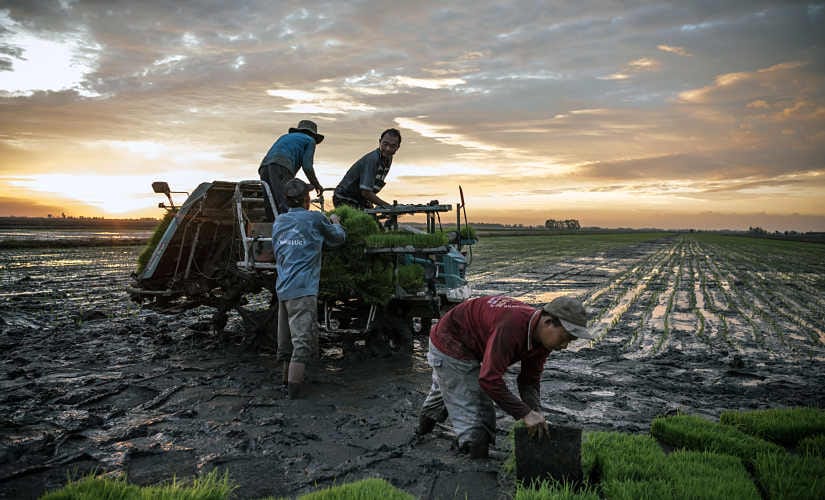Bangkok: As China was stricken by the coronavirus in late February, its foreign minister addressed a concerned crowd in Laos, where farmers and fishers across the Mekong river region were contending with the worst drought in living memory. His message: We feel your pain. The foreign minister, Wang Yi, said China was also suffering from arid conditions that were sucking water from one of the world’s most productive rivers. But new research from American climatologists shows for the first time that China, where the headwaters of the Mekong spring forth from the Tibetan Plateau, was not experiencing the same hardship at all. Instead, Beijing’s engineers appear to have directly caused the record low water levels by limiting the river’s flow. “The satellite data doesn’t lie and there was plenty of water in the Tibetan Plateau, even as countries like Cambodia and Thailand were under extreme duress,” said Alan Basist, who co-wrote the report, which was released on Monday, for Eyes on Earth, a water resources monitor. “There was just a huge volume of water that was being held back in China,” Basist added. The Mekong is one of the most fertile rivers on earth, nurturing tens of millions of people with its nutrient rich waters and fisheries. But a series of dams, mostly in China, have robbed the river’s riches. [caption id=“attachment_8257481” align=“alignnone” width=“825”] The Nam Ou 1 Dam on the Mekong River in Luang Prabang Province, in northern Laos, under construction in December 2018. It was built by China’s largest hydropower company. By Sergey Ponomarev © 2020 The New York Times[/caption] Those who depend on its inland fisheries say their catches have declined precipitously. Persistent droughts and sudden floods have buffeted farmers. Beijing’s control of the upstream Mekong, which provides as much as 70 percent of the downstream water in the dry season, has raised hackles, even though the Southeast Asian nations depend on trade with China. While the Chinese government has introduced a global development program that it says will benefit poorer trading partners, a backlash is growing among countries that feel they are losing out. “The problem is that the Chinese elite see water as something for their use, not as a shared commodity,” said Brian Eyler, director of the Stimson Center’s Southeast Asia programme and author of Last Days of the Mighty Mekong. As China’s geopolitical weight has grown, its leaders have cast the nation as a different kind of superpower, one that is concerned, as the Chinese phrasing goes, with “win-win” relationships with other nations. But some countries, like Sri Lanka and Djibouti, have fallen into what critics fear are debt traps, as strategic projects end up in Chinese hands. Other African and Asian nations are worried that China is simply another imperial power eager to vacuum up natural resources without concern for the local populace. “This is part of China’s business development,” said Chainarong Setthachua, a lecturer and Mekong expert at Mahasarakham University in northeastern Thailand. “The lay people who depend on the resources of the Mekong River for their livelihoods and income are automatically excluded.” The data modelling created by Basist and his colleague Claude Williams measures the various components of a river’s flow, from snow and glacial melt to rainfall and soil moisture. The scientists found that for most years, the natural, unimpeded flow of the upstream Mekong roughly tracked water levels measured downstream at a gauge in Thailand, with occasional exceptions when dam reservoirs in China were being filled or released. When there was a seasonal drought in China, the five downstream nations — Myanmar, Thailand, Laos, Cambodia and Vietnam — would eventually feel it. When there was overabundant water in China, floods ensued in the Mekong basin. But during last year’s wet season, the fortunes of the river’s two parts diverged in dramatic fashion. As China’s section of the Mekong welcomed an above average volume of water, downstream countries were stricken by a drought so crushing that parts of the river dried up entirely, leaving cracked riverbed exposed in a season when fishing should have been plentiful. [caption id=“attachment_8257501” align=“alignnone” width=“825”]
 File image of workers preparing to plant rice seedlings on a farm in the Mekong River Delta near Hong Ngu, Vietnam. By Sergey Ponomarev © 2020 The New York Times[/caption] At one gauge in Chiang Saen, in northern Thailand, such low water levels had never been recorded before. Overall, during the 28-year period they studied this gauge, Basist and his colleague calculated that dams in China had held back more than 410 feet of river height. While addressing regional foreign ministers in February, Wang, the Chinese foreign minister, contended that China, too, was suffering. He suggested that the Chinese leadership was being magnanimous by sending water downstream, especially at a time when Beijing was contending with a severe coronavirus outbreak. “Though China itself has also been afflicted by the drought and a serious shortage of precipitation in the upper reaches, it has overcome various difficulties to increase the water discharge,” he said. Basist disputed this take. “You look at our mapping, and it’s bright blue with plenty of water in China and bright red from an extreme lack of water in Thailand and Cambodia,” he said. “China can regulate this river’s flow through dams and that appears to be exactly what it’s doing.” Adding to the downstream pain were sudden releases of water from China, which often came unannounced and drowned crops that had been planted near the banks because of the drought.
File image of workers preparing to plant rice seedlings on a farm in the Mekong River Delta near Hong Ngu, Vietnam. By Sergey Ponomarev © 2020 The New York Times[/caption] At one gauge in Chiang Saen, in northern Thailand, such low water levels had never been recorded before. Overall, during the 28-year period they studied this gauge, Basist and his colleague calculated that dams in China had held back more than 410 feet of river height. While addressing regional foreign ministers in February, Wang, the Chinese foreign minister, contended that China, too, was suffering. He suggested that the Chinese leadership was being magnanimous by sending water downstream, especially at a time when Beijing was contending with a severe coronavirus outbreak. “Though China itself has also been afflicted by the drought and a serious shortage of precipitation in the upper reaches, it has overcome various difficulties to increase the water discharge,” he said. Basist disputed this take. “You look at our mapping, and it’s bright blue with plenty of water in China and bright red from an extreme lack of water in Thailand and Cambodia,” he said. “China can regulate this river’s flow through dams and that appears to be exactly what it’s doing.” Adding to the downstream pain were sudden releases of water from China, which often came unannounced and drowned crops that had been planted near the banks because of the drought.
“The water release by China is political,” said Chainarong, of Mahasarakham University. “It’s made out to be them doing a favour. They create damage, but they ask for gratitude.”
While the Mekong is a lifeline for residents of downstream nations, the river rushes through narrow gorges in China, making it impractical for economic activity other than hydropower. At the turn of this century, the Chinese government, whose leadership at the time was dominated by engineers, began accelerating plans to dam the Lancang, as the Mekong is known in China. Today, the Chinese section of the river in the nation’s southwest is punctuated by 11 major dams, which produce far more power than the region needs. Other great rivers that begin in the icy reaches of the Tibetan Plateau, like the Brahmaputra, have also been dammed in China. The existing energy glut was one reason Chinese environmentalists succeeded in persuading the government to shelve plans to dam another river in the region, the Nu, which becomes the Salween when it enters Myanmar. Yet even as Beijing began its hydropower push on the Mekong, it refused to join Thailand, Cambodia, Vietnam and Laos in a regional group dedicated to the river’s health. In one survey commissioned by the group, the Mekong River Commission, scientists warned that a dam boom on the Mekong could rob the river of 97 percent of the sediment that flows to its mouth in Vietnam. “The river will be dead,” said Niwat Roykaew, a community organiser and conservationist in northern Thailand. [caption id=“attachment_8257471” align=“alignnone” width=“825”] A narrow section of water flows through the dried-out riverbed of the Mekong River near Sangkhom, Thailand on 25 January. By Adam Dean © 2020 The New York Times[/caption] Instead, Beijing created its own Lancang-Mekong Cooperation initiative and financed a lavish building for the group in Cambodia, where Prime Minister Hun Sen has brought the country firmly into Beijing’s orbit. Critics accuse the Beijing-funded initiative of being less a mechanism for protecting the river and more a mouthpiece for China’s campaign on the Mekong. But even Hun Sen, Asia’s longest serving autocrat, appears to have been shaken by the devastating lack of water in the Mekong, which accelerated last July. The energy ministry announced last month that Cambodia was suspending plans for dams on the Mekong, which would have been mostly funded by China. Meanwhile, the water reserves in China swelled, as dam reservoirs filled with the glacial melt that has fed the Mekong for millenniums. “Glaciers are bank accounts of water but with climate change they’re melting fast,” Basist said. “The Chinese are building safe deposit boxes on the upper Mekong because they know the bank account is going to be depleted eventually and they want to keep it in reserve.” Hannah Beech c.2020 The New York Times Company


)

)
)
)
)
)
)
)
)



